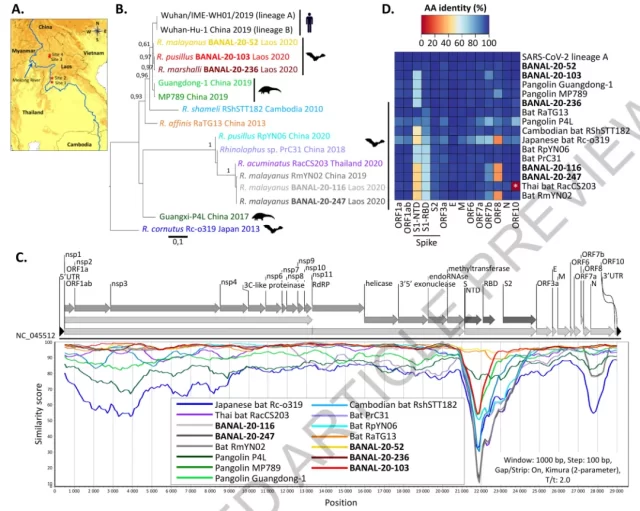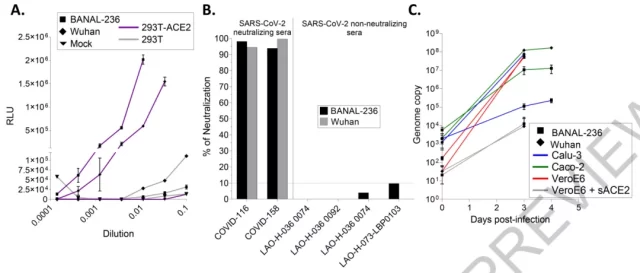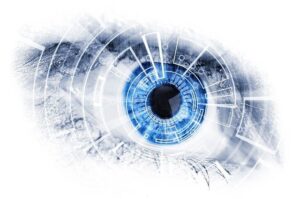Breakthrough Discovery: The bat coronavirus that can infect human cells through ACE2
- Did Cloud Seeding Unleash a Deluge in Dubai?
- Scientists Identify Gut Bacteria and Metabolites that Lower Diabetes Risk
- OpenAI’s Model Matches Doctors in Assessing Eye Conditions
- UK: A Smoke-Free Generation by Banning Sales to Those Born After 2009
- Deadly Mutation: A New Monkeypox Variant Emerges in the DRC
- EPA Announces First-Ever Regulation for “Forever Chemicals” in Drinking Water
Breakthrough Discovery: The bat coronavirus that can infect human cells through ACE2
- Red Yeast Rice Scare Grips Japan: Over 114 Hospitalized and 5 Deaths
- Long COVID Brain Fog: Blood-Brain Barrier Damage and Persistent Inflammation
- FDA has mandated a top-level black box warning for all marketed CAR-T therapies
- Can people with high blood pressure eat peanuts?
- What is the difference between dopamine and dobutamine?
- How long can the patient live after heart stent surgery?
Breakthrough Discovery: The bat coronavirus that can infect human cells through ACE2.
Nature: A new breakthrough in the traceability of COVID-19, the discovery of a bat coronavirus that can infect human cells through ACE2.
The COVID-19 pandemic has been going on for more than two years, causing hundreds of millions of infections and hundreds of deaths around the world. However, the origin of the new coronavirus (SARS-CoV-2) has sparked heated debate and remains unclear. Although many virologists assert that the most likely origin of the new coronavirus is bats , there is still a lack of substantive evidence.
On February 16, 2022, Marc Eloit of the Pasteur Institute in France and others published a research paper entitled: Bat coronaviruses related to SARS-CoV-2 and infectious for human cells in the journal Nature .
The research team discovered a coronavirus with a genome similar to the new coronavirus in bats in a karst limestone cave in northern Laos , and the coronavirus can infect human cells . The finding supports the hypothesis that the new coronavirus may have originated in bats in limestone caves in or near Southeast Asia .

Previously, a variety of coronaviruses related to SARS-CoV-2 have been found in Asian horseshoe bats.
However, it has not been found in bats that are genomically close to SARS-CoV- 2 and can pass the ACE2 receptor.
SARS-CoV progenitor virus that infects human cells, and such viruses will be the key to unraveling the origin of the new coronavirus.
In this Nature paper, the research team examined 645 bats (46 species of bats belonging to 6 families) living in limestone caves in northern Laos and found 3 coronaviruses closely related to SARS-CoV-2. Virus.
Their receptor binding domain (RBD) differs from the new coronavirus receptor binding domain (RBD) by only one or two amino acid residues at the binding interface with ACE2 .

More importantly, compared with the SARS-CoV-2 strains isolated at the beginning of the COVID-19 outbreak, these newly discovered coronaviruses bind the human ACE2 protein more efficiently , and can enter human cells and in cells by recognizing ACE2. replication, and this process can be inhibited by SARS-CoV-2 neutralizing antibodies.
Moreover, none of these coronaviruses contain a furin cleavage site in their spike proteins.

Overall, this study identified new bat coronaviruses in limestone caves in the back of Laos, which are related to the new coronavirus (SARS-CoV-2) and are able to enter human cells through human ACE2, and in human cells replicate and therefore have the potential to infect humans.
The discovery of these viruses provides key evidence for understanding the origin of the new coronavirus, suggesting that the new coronavirus (SARS-CoV-2) likely originated in bats in limestone caves in or near Southeast Asia.
Reference :
https://www.nature.com/articles/s41586-022-04532-4
Breakthrough Discovery: The bat coronavirus that can infect human cells through ACE2
(source:internet, reference only)
Disclaimer of medicaltrend.org
Important Note: The information provided is for informational purposes only and should not be considered as medical advice.



